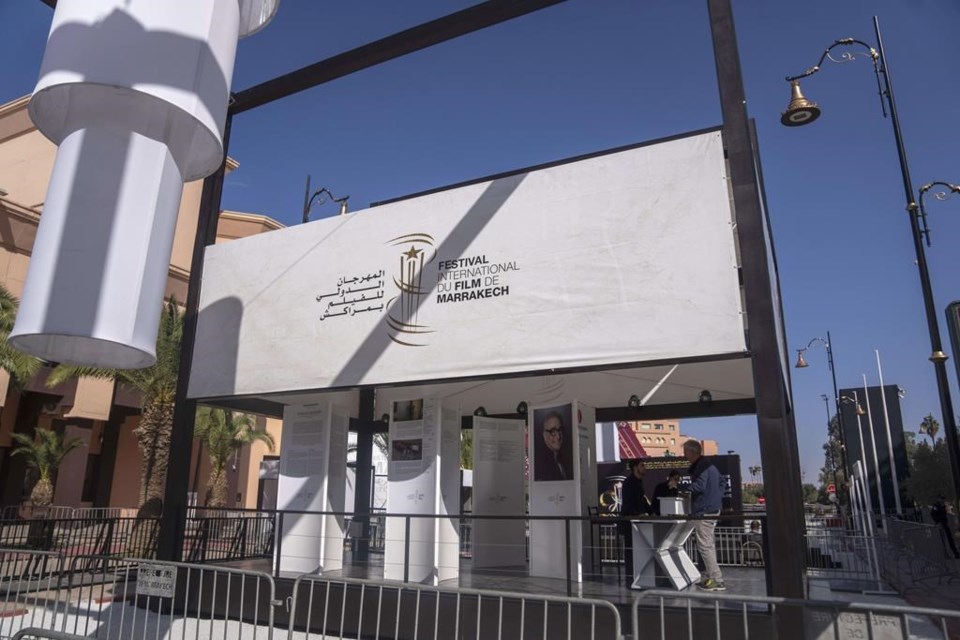MARRAKECH, Morocco (AP) ŌĆö Italian director Matteo Garrone hopes that the way his film ŌĆ£Io CapitanoŌĆØ frames the journey taken by Senegalese teenagers to Europe as an adventure, albeit a harrowing one, will make it more compelling to audiences regardless of politics.
The film, which played over the weekend at the , accompanies aspiring musicians Seydou and Moussa as they venture from Dakar through and and voyage across the Mediterranean Sea to reach Italy. The naive pair ŌĆö unknowns whom Garrone found and cast in Senegal ŌĆö witness mass death in the Sahara, scams and torture beyond their expectations.
The film has had box office success and rave reviews in Italy since its release in September, and it was screened for Pope Francis. ŌĆ£Io CapitanoŌĆØ comes as Europe, particularly Italy, reckons with an increasing number of migrants arriving on its southern shores ŌĆö 151,000 so far in 2023. An estimated 1,453 are dead or missing, according to figures from the United Nations refugee agency.
Italian Premier Georgia Meloni has called migration Her government has worked to strike to house asylum-seekers with applications under review and a broad intended to prevent smuggling and Mediterranean crossings.
Though Garrone acknowledges that those who choose to see the film in theaters may already be sympathetic to migrants who take great risks to reach the Europe they perceive as a promised land, he said in an interview with The Associated Press that showing the film in schools to teenagers who may not choose to see it otherwise had been particularly powerful.
ŌĆ£ItŌĆÖs very accessible for young people because itŌĆÖs the journey of the hero and an odyssey,ŌĆØ he said. ŌĆ£The structure is not complicated. They come thinking they might go to sleep, but then they see it's an adventure.ŌĆØ
ŌĆ£AdventureŌĆØ ŌĆö a term used for years by West African migrants themselves that portrays them as more than victims of circumstance ŌĆö doesn't do the film's narrative justice, however. The plot is largely based on the life of script consultant Mamadou Kouassi, an Ivorian immigrant organizer living in the Italian city of Caserta.
The film shows the two cousins Seydou and Moussa leaving their home without alerting their parents or knowing what to expect. They pay smugglers who falsely promise safe passage, bribe police officers threatening to jail them and call home as members of Libyan mafias running non-governmental detention centers extort them under the threat of torture.
In Libya, the cousins watch as migrants are burned and hung in uncomfortable positions. Seydou at one point is sold into slavery to a Libyan man who agrees to free him after he builds a wall and fountain at a desert compound.
ŌĆ£There are more people who have died in desert that no one mentions,ŌĆØ Kouassi said, contrasting the Sahara with the Mediterranean, where international agencies more regularly report figures for the dead and missing.
ŌĆ£This makes a point to show a truth that hasn't been told about the desert and the people who've lost their lives there, in Libyan prisons or in slavery," he added.
The film's subject is familiar to those who follow in Europe and North Africa. The film's structure mirrors many journalistic and cinematic depictions of migrant narratives. But "Io CapitanoŌĆØ shows no interest in documentary or cinema v├®rit├®-style storytelling. Garrone's shots of the Mediterranean and the Sahara depict them in beautifully panoramic splendor rather than as landscapes of death and emptiness.
Many scenes set in the Sahara were shot in Casablanca and the desert surrounding Erfoud, Morocco. Garrone said he relied heavily on migrants in Rabat and Casablanca who worked on the film as extras. They helped consult on scenes about crossing the Sahara and about Libya's detention centers.
ŌĆ£What was really important was to show a part of the journey that we usually donŌĆÖt see," he said. ŌĆ£We know about people dying in the desert, but we usually only know about numbers. Behind these numbers, there are human beings very much like us.ŌĆØ
___
Follow APŌĆÖs global migration coverage at
Sam Metz, The Associated Press



